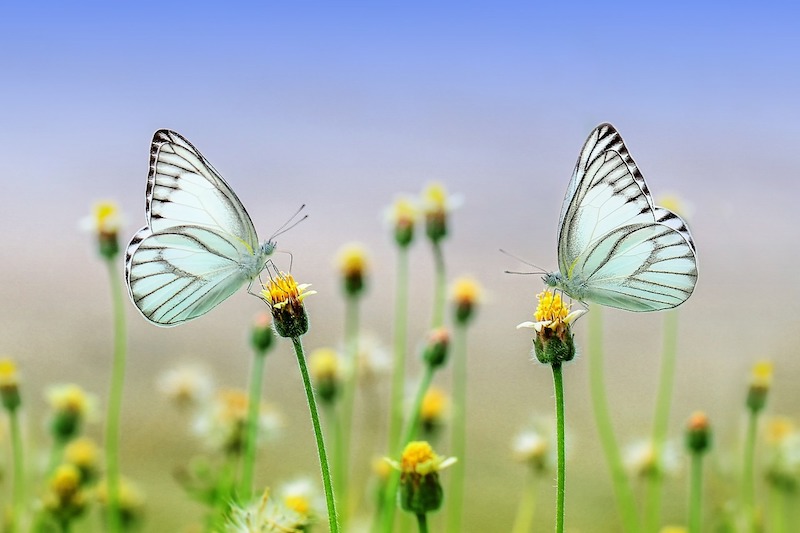Butterflies can enhance the beauty of any garden and are effective pollinators. Not to mention that your kids will love putting together this butterfly garden.
Butterfly Gardens
Q: Back in the spring, my kids and I planted some perennials that were supposed to attract butterflies, but we haven't seen any. What else can we do to attract them?
A: If all you want to do is attract adult butterflies, then you need to provide them with food, water, shelter and a food plant for the caterpillar stage of their life cycle.
Caterpillars eat plants, and adults drink nectar from flowers. They usually go to different species of plants in each stage. There are only a few plants that provide both food for the caterpillar and nectar for the adults. For North American gardens, the following plant groups can be used for both purposes: aster, cherry, clover, marigold, milkweed, Queen Anne's lace and thistle.
Many species only lay their eggs on a few types of plants, so if you want them, you need to find out the name of the proper plant. For example, fennel and parsley are both good for attracting black swallowtail butterflies. Birch and elm trees are good for attracting mourning cloak, white admiral and question mark butterflies. You must remember that caterpillars only have chewing mouthparts and cannot walk very far, so they will eat as much of the plant as they can. Chewed-up plants are part of the butterfly game.
Adult butterflies do not harm plants; they help pollinate them. There are many good nectar producers among native plants, perennial garden flowers, annuals and even some trees and shrubs. For the best success, try to have plants blooming in all seasons. But even with plants blooming all season long, you will need a large area of flowers to attract butterflies.
Some of the best nectar-producing plants are in the Compositae family, like coneflower, coreopsis and rudbeckia. Good prairie plants include liatris, monarda, goldenrod and milkweed. Good shrubs include butterfly bush, caryopteris, clethra, privet, spirea and lilac. Good annuals include cosmos, lantana, nicotiana, petunia and zinnia.
Some butterflies are attracted to butterfly feeders, which are similar to hummingbird feeders. Some are also attracted to pieces of rotting fruit, which can be placed on the feeders. Until butterflies arrive, place the feeders within the butterfly garden. Afterward, you can move the feeder closer to the house windows a few feet at a time so you can enjoy them from inside.
Some butterflies are attracted to mud puddles, where they get not only needed moisture but also extra nutrients. Lay a birdbath top on the ground, and fill it up with water and a quarter sand or mud. Keep the bath in a sunny spot.
Butterflies fly best when the air is warm. To fly in cool air, they must warm themselves with the sun. They can open their wings and face them at the sun or use them as mirrors and reflect the sun at their body. Generations born earlier in the spring are often darker, so they can warm up easier. A butterfly garden in the sun will be more successful than one in the shade.
It can be very disappointing for kids to plant a garden and then not get the immediate success they expect. Successful gardening often teaches patience. Even easy crops like tomatoes take several months to produce a product. Take the kids on a butterfly field trip. Many locations now have butterfly gardens or greenhouse-type structures temporarily filled with butterflies.
Use a butterfly field guide to identify the various kinds, and keep a list of what they see. Many bird watchers have kept lists. Butterfly watchers are beginning to do the same.
Save or share this infographic for reference: Butterfly Gardens

Email questions to Jeff Rugg at [email protected]. To find out more about Jeff Rugg and read features by other Creators Syndicate writers and cartoonists, visit the Creators Syndicate website at www.creators.com.
COPYRIGHT 2017 JEFF RUGG
DISTRIBUTED BY CREATORS.COM



